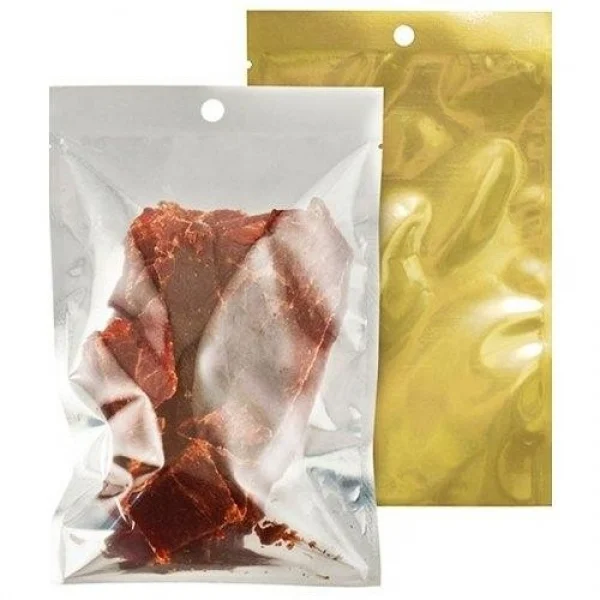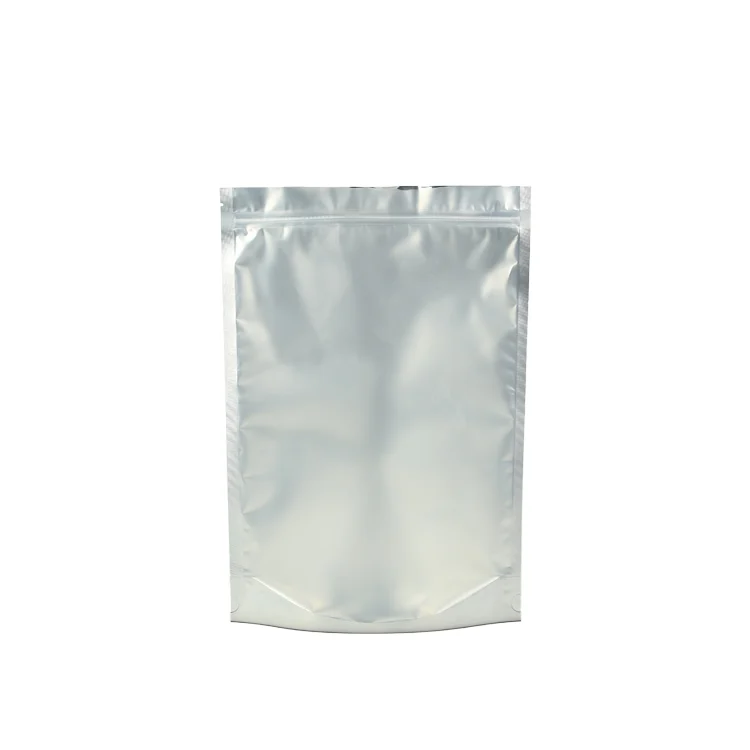Frozen food packaging bags on the market can be primarily categorized into single-layer bags, composite bags, and multi-layer composite bags. Among these, composite flexible plastic bags are the most widely used for frozen foods. Such packaging bags feature diverse material combinations in their structural design.
What materials are used for frozen food packaging bags?
1. PET/PE Frozen Food Packaging Bags
This material structure is commonly used in quick-frozen food packaging. It offers excellent moisture resistance, cold tolerance, and low-temperature heat seal performance, while also being cost-effective. It utilizes packaging-grade plastic and food-grade materials.
2. BOPP/PE and BOPP/CPP
Both structures exhibit excellent moisture resistance, cold tolerance, and high low-temperature heat seal tensile strength. They offer good cost-effectiveness. Notably, BOPP/PE provides a better tactile feel than PET/PE, enhancing product marketing appeal.
3. PET/VMPET/CPE and BOPP/VMPET/CPE Frozen Food Packaging Bags
These three-layer structures offer enhanced durability and barrier performance compared to dual-layer bags. The presence of an aluminized layer provides superior printability. However, they exhibit slightly inferior low-temperature heat sealability and higher costs relative to the aforementioned materials.

4. PA/PE, PET/PA/LLDPE, PET/PA/AL/PE, PA/PE
These four material structures offer superior freeze resistance and impact tolerance. The PA layer provides excellent puncture resistance. The drawback is higher production costs, making them commonly used for packaging angular or heavier food products.
Additionally, there are simple PE bags, typically used as outer packaging for vegetables and minimally packaged frozen foods. Beyond packaging bags, some frozen foods require thermoformed trays. The most common tray material is PP, with food-grade PP offering good hygiene properties and suitability for use at temperatures as low as -30°C. Other materials like PET are also available. Corrugated cardboard boxes, as universal transport packaging, are prioritized for frozen food shipping due to their protective and crush-resistant properties, along with cost advantages. Currently, frozen food safety concerns are receiving increasing attention.

Key factors affecting frozen food safety include: 1. Freshness and quality of raw ingredients 2. Contamination risks during processing 3. Packaging integrity (e.g., bag ruptures) 4. End-to-end cold chain maintenance
7 Essential Considerations for Frozen Food Packaging:
① Packaging standards and regulations
② Characteristics of frozen food bags and protective conditions
③ Performance and applicability of packaging materials
④ Market positioning and distribution area conditions
⑤ Impact of overall packaging structure and materials on frozen food
⑥ Rational packaging structure and decorative design
⑦ Packaging testing.
5 Characteristics of High-Quality Frozen Food Packaging Bags:
① High barrier properties to prevent oxygen exposure and moisture evaporation
② Impact resistance and puncture resistance
③ Low-temperature resistance, maintaining shape and flexibility without brittleness at -45°C
④ Oil resistance
⑤ Hygienic properties, preventing migration of harmful substances into food
Frozen food packaging bags must meet extensive distribution requirements, preserving product quality from production through transportation and sales while preventing bacterial and contaminant contamination.
Wanle Package specializes in producing various high-quality frozen food packaging bags. Contact us now to enjoy excellent service and customized solutions!
